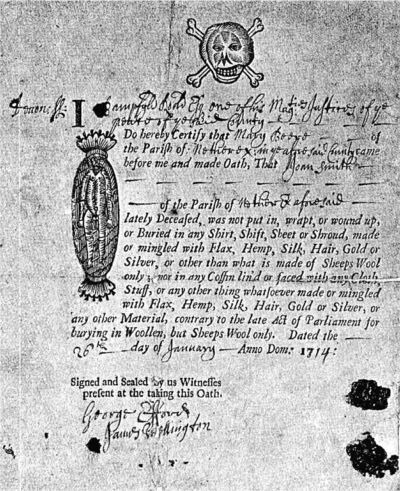Burial in Woollen Acts
In researching my Nurse ancestors in the Chew Magna area of North Somerset, I came across the following entry in the Chew Stoke parish register.
5 Jan 1695 – Robert Nurse was buried
Rebecca Nurse of Chew Stoke hath made affidavit before Robert Payne ___, of Norton Malreward in the presence of Mary Lassey and Jone Walker for burying in woolen. – January 12 1695

Although the first Burial in Woollen Act was passed in 1666, the 1678 Act provided much useful documentary evidence.(see “Burying in Woollen Acts” 2023)
The Act generated a great deal of paperwork, which was required to prove that the Act’s conditions had been met, and was a classic piece of protectionist legislation. The problem was that the woolen industry that provided a livelihood for many families was in decline, and the Act was designed to provide a new market for woolen cloth.
The Act stated that no corpse (other than those who died of plague) “… shall be buried in any shirt, shift, sheet or shroud or anything whatsoever made or mingled with flax, hemp, silk, hair, gold or silver, or any stuff or thing other than what is made of sheep’s wool only …”
Within eight days of a funeral, an affidavit had to be made before a Justice of the Peace or a clergyman to confirm that the body had been buried in wool only. A close relative of the deceased usually swore the oath. Those too poor to afford the woolen cloth could be buried naked. Otherwise non-compliance carried the heavy penalty of five pounds, which was chargeable on the estate of the deceased.
Bibliography
“Burying in Woollen Acts.” 2023. Wikipedia; Wikimedia Foundation. 2023. https://en.wikipedia.org/w/index.php?title=Burying_in_Woollen_Acts&oldid=1164534714.